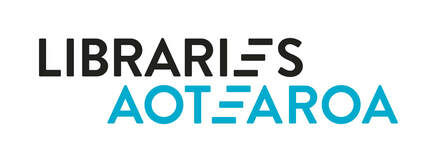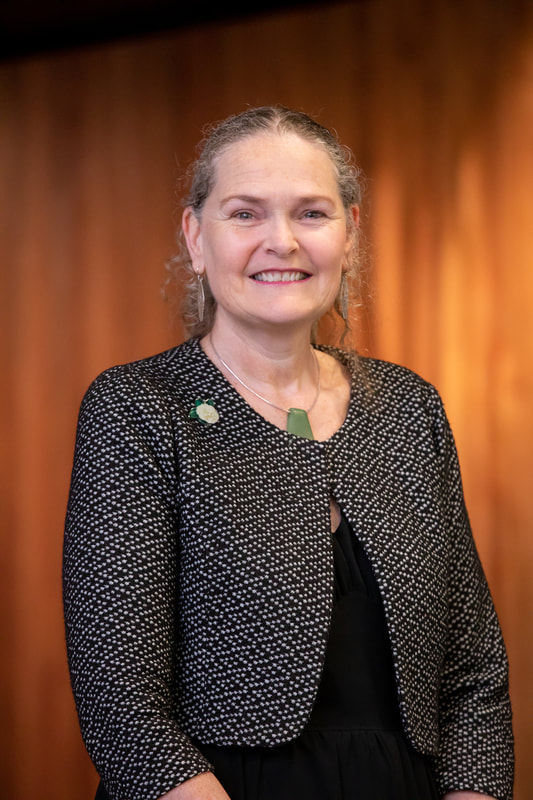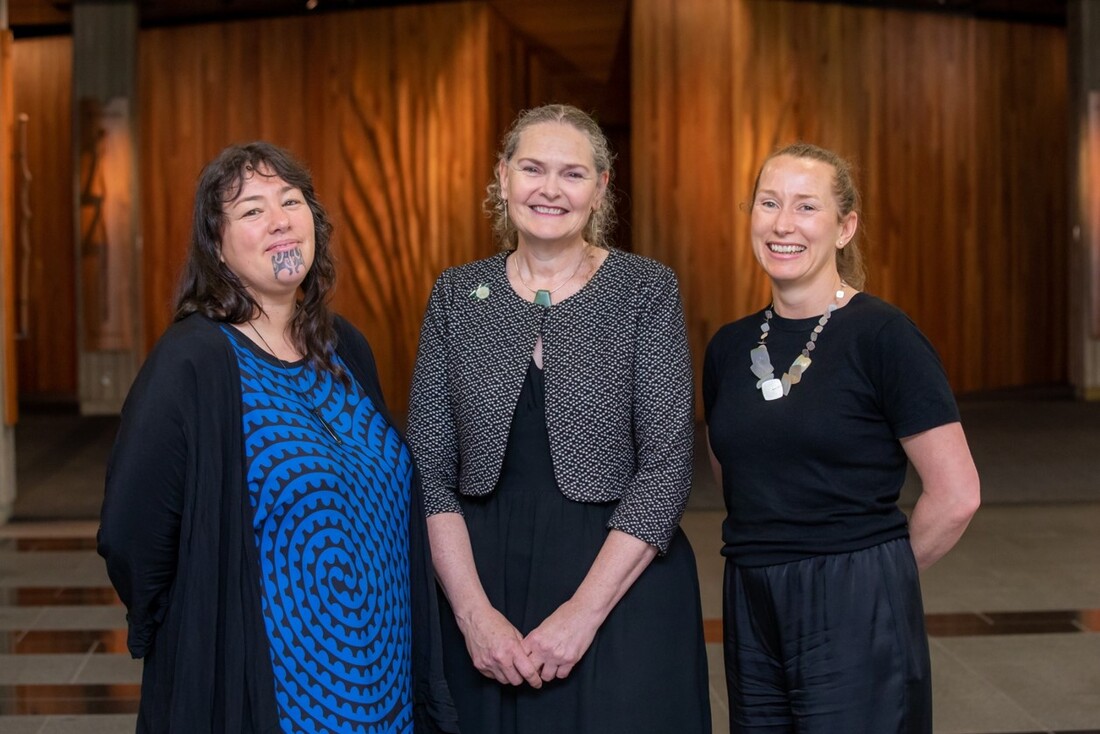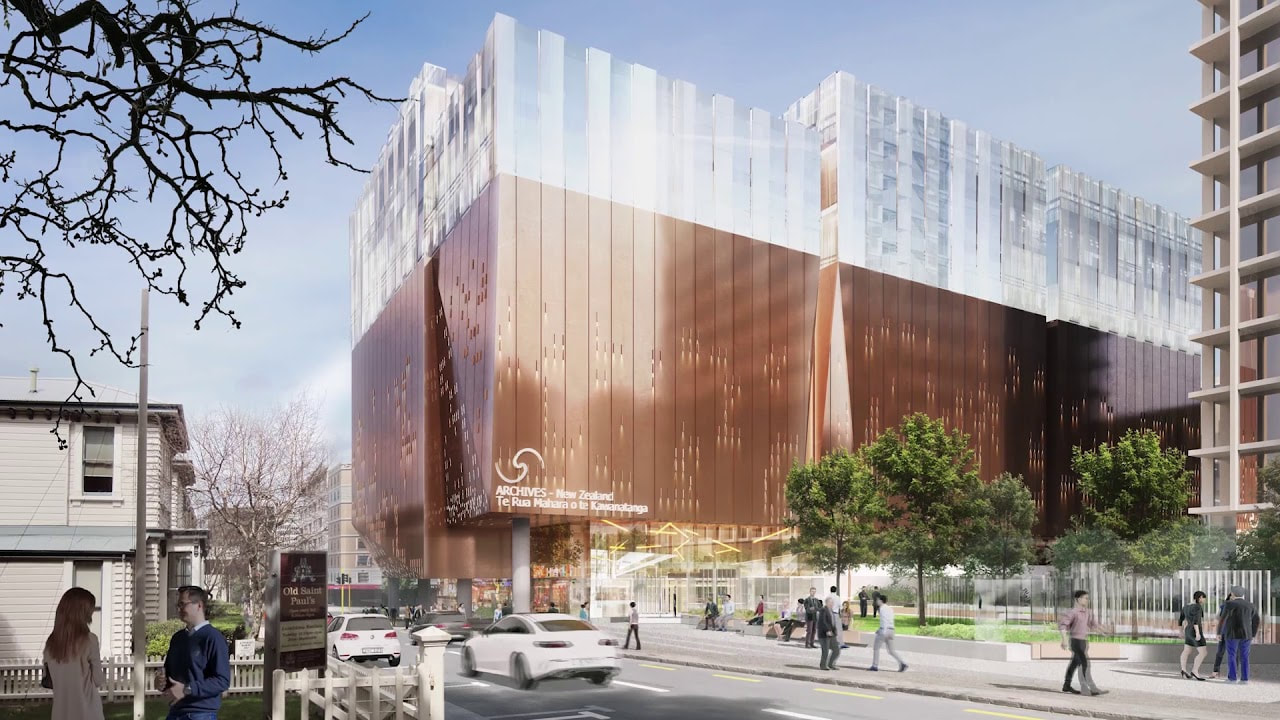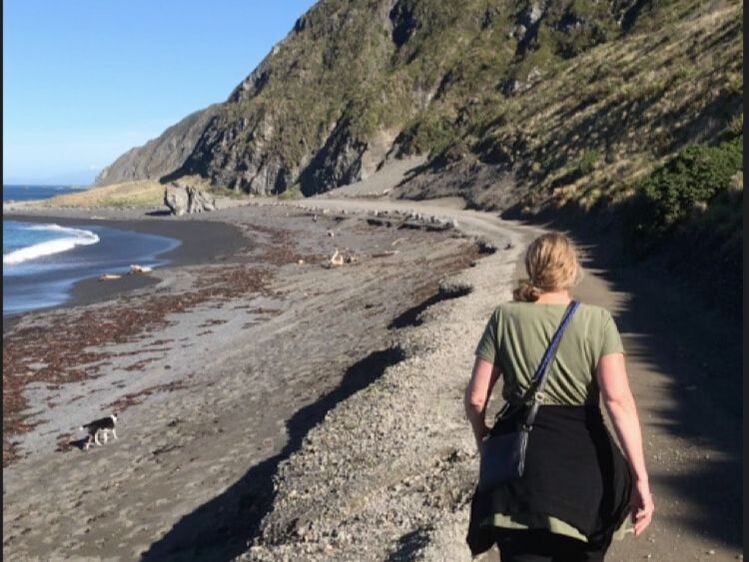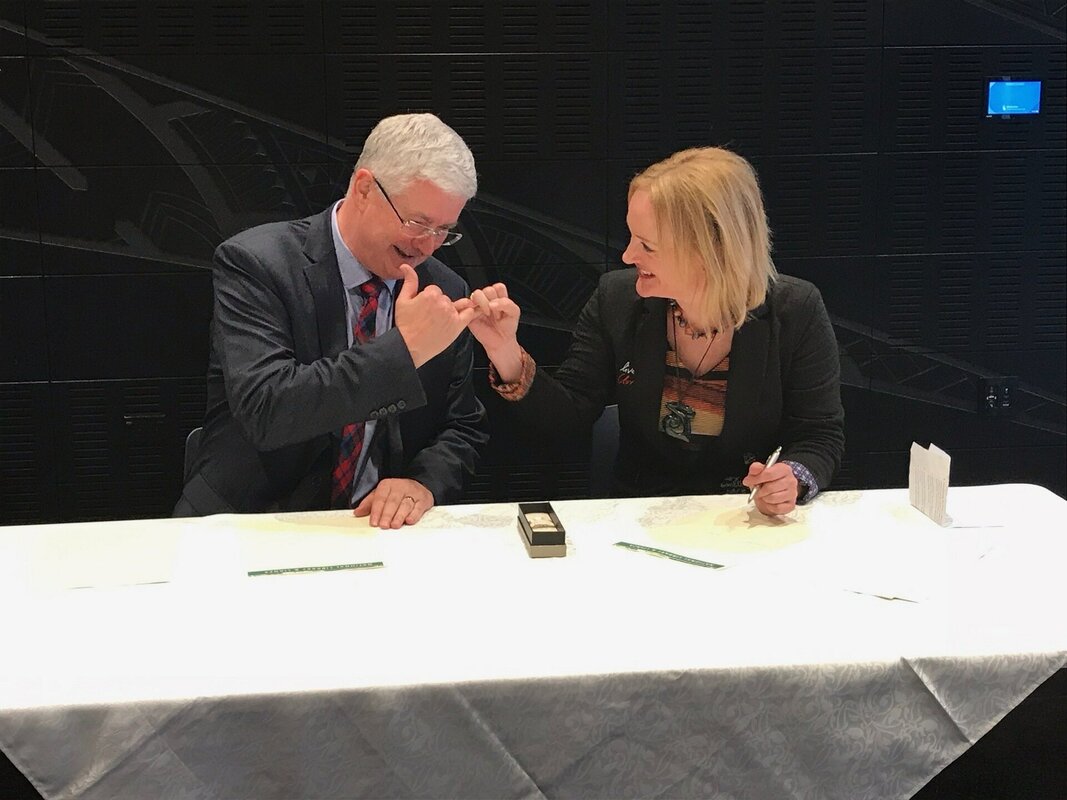Exclusive interview with Rachel Esson, National Librarian
|
Library Life is pleased to bring you this exclusive interview with Rachel Esson as she shares her vision for the future of the National Library.
Kia ora Rachel and thanks so much for taking the time to talk with Library Life! You must be very busy settling into your new role, although at least you are familiar with the workplace! Congratulations again, we are so pleased to see you in this position. I hear you are the first internal hire to the position of National Librarian? Yes! I understand so – I didn’t realise that initially but there has never been anyone appointed internally before. That seems really significant to me. What are your thoughts on that? I think there are a couple of ways of looking at it – one way is that New Zealand is maturing a little bit – looking to our own leaders to run our cultural institutions. A more cynical view might be that it is the impact of COVID. |
I’d like to think it’s the former!
I’d like to think so too. When you look across the sector – at recent appointments such as Courtney Johnston at Te Papa and Honiana Love at Ngā Taonga Sound & Vision – I think we are starting to see a shift recognising we have leaders we can develop and grow here. I loved seeing that recent photograph of Courtney, Honiana and myself – three wahine toa.
I’d like to think so too. When you look across the sector – at recent appointments such as Courtney Johnston at Te Papa and Honiana Love at Ngā Taonga Sound & Vision – I think we are starting to see a shift recognising we have leaders we can develop and grow here. I loved seeing that recent photograph of Courtney, Honiana and myself – three wahine toa.
Absolutely, I think it bodes well for the GLAMI sector in New Zealand.
I’m guessing you are coming into this role with a vision – can you share with our readers what that is broadly speaking?
We have strategic directions that we arrived at after a fairly extensive consultation exercise a few years ago. It’s called Turning Knowledge Into Value. We have three strategic themes: taonga, knowledge and reading. I think those themes are still valid, and they provide a really good pathway. The work that I want to do is about bringing those to life.
The piece of work that I want to bring energy to is our role in the sector – what is the role of a National Library, what is it that only we can do by virtue of our scope. We are the only library that is mandated to provide support to the library sector; we have a reasonable scale. I want to really focus on that support for the library system and have conversations with people in the library sector – what does that look like – reviewing the services we provide to the library sector: are they still valid? Are there gaps? Are there things we can do better? Are there things we should stop doing? We haven’t ever really taken a step back and looked at that in a holistic way.
A lot of the things that we do, that I think are really important, like APNK and Kōtui are things that have evolved in response to a need and we’ve been able to deliver those services, but they’ve evolved in an ad-hoc way – not part of an overall strategy so, I want to bring some rigour to that. I want the National Library to do more advocacy in terms of developing the tools to be able to tell the story of the value of libraries – what is it that we bring? Why is it important to have libraries? We have a huge opportunity with the New Zealand Libraries Partnership Programme (NZLPP) to do some of that work and we’ve actually got some resources to do that as well, so that’s really exciting. Also, to empower libraries and librarians, because I think that we’re been a little inward focussed, which is great – we have to do that – but it is the role of the National Library to connect all those stories of value and have those conversations on a national level and within the wider GLAMI sector. There are lots of connections to be made there. It feels like the time is right. We have a government that recognises the value of communities and things that can strengthen communities and a minister who is excited about literacy.
I’m guessing you are coming into this role with a vision – can you share with our readers what that is broadly speaking?
We have strategic directions that we arrived at after a fairly extensive consultation exercise a few years ago. It’s called Turning Knowledge Into Value. We have three strategic themes: taonga, knowledge and reading. I think those themes are still valid, and they provide a really good pathway. The work that I want to do is about bringing those to life.
The piece of work that I want to bring energy to is our role in the sector – what is the role of a National Library, what is it that only we can do by virtue of our scope. We are the only library that is mandated to provide support to the library sector; we have a reasonable scale. I want to really focus on that support for the library system and have conversations with people in the library sector – what does that look like – reviewing the services we provide to the library sector: are they still valid? Are there gaps? Are there things we can do better? Are there things we should stop doing? We haven’t ever really taken a step back and looked at that in a holistic way.
A lot of the things that we do, that I think are really important, like APNK and Kōtui are things that have evolved in response to a need and we’ve been able to deliver those services, but they’ve evolved in an ad-hoc way – not part of an overall strategy so, I want to bring some rigour to that. I want the National Library to do more advocacy in terms of developing the tools to be able to tell the story of the value of libraries – what is it that we bring? Why is it important to have libraries? We have a huge opportunity with the New Zealand Libraries Partnership Programme (NZLPP) to do some of that work and we’ve actually got some resources to do that as well, so that’s really exciting. Also, to empower libraries and librarians, because I think that we’re been a little inward focussed, which is great – we have to do that – but it is the role of the National Library to connect all those stories of value and have those conversations on a national level and within the wider GLAMI sector. There are lots of connections to be made there. It feels like the time is right. We have a government that recognises the value of communities and things that can strengthen communities and a minister who is excited about literacy.
|
It seems like a golden moment.
Yes, and we have to leverage that. When my appointment was announced to staff I said to them “Now is our time, we have to make sure we make the most of this.” That brings a tear to my eye! People were moved! The other thing that we have is Tāhuhu, the new building project. This is a massive investment in the sector, the likes of which we haven’t seen for decades. It’s a once in a generation opportunity, so we have a huge responsibility as well. Tāhuhu is a programme which includes the upgrade and construction of modern, purpose-built facilities designed to ensure New Zealand’s documentary heritage is preserved and protected across Archives New Zealand, the National Library of New Zealand and Ngā Taonga Sound & Vision. |
|
How do you feel with that weight on your shoulders?
Actually, really good! You do seem to have a spring in your step! I do! It’s a new era and I’m excited to make things happen – it’s energising to have the opportunities. I acknowledge that a lot of work has been done laying the foundation to enable this. With opportunities come challenges – I don’t underestimate how hard they will be. How do you maintain the resilience and energy for facing those challenges? I walk the dog at 6 am every morning with my sister and that really energises me. I also have a wide range of interests, including a book group (of course), an art-buying group and playing tennis. Over the last couple of years, I’ve also developed an interest in gin made in Aotearoa. My current favourite gin is Little Biddy made on the West Coast in Reefton. |
What’s the first big task you want to get your teeth stuck into?
The NZLPP is an opportunity to talk about a sector strategy that goes beyond the life of the programme funding. The programme is set for two years and we are very conscious that we should use this chance to have conversations about things we can set in place now that will have a life beyond the programme and will significantly, and positively, contribute to the value that libraries can add to Aotearoa New Zealand. LIANZA members should look out for opportunities to engage with this work in the coming months.
I guess that will need to start now then?
Part of this work, and the sector leadership work I discussed earlier, I want to get started on fairly quickly. There are also conversations we are starting to have around digital heritage as a system – what does it look like? What should our priorities be? What are the gaps? Are we investing in the right places? For the leadership team, it’s about saying – given the strategic directions and given all of the things we could be doing – what are we going to be focussing on?
The first step is doing the engagement work and setting those objectives, then looking at how we deliver to those. We know we need to continue to develop in the digital space – digital capability, digital delivery. We’ll be putting energy into future budget bids to develop our digital capacity in the way that the government is investing in our physical infrastructure with the archives building and off-site repository. We need a similar investment in digital. Alongside that, we need librarians with the skills to work in the digital environment.
We need to reset our international strategy – who are we engaging with? Why? How? What are the outcomes we are looking for from that? The Pacific is really important and the Pacific Virtual Museum (PVM) is a project I think we can be really proud of. That’s an opportunity we can grow. We’ve had the rhetoric of wanting to engage with the Pacific for a long time now and now the PVM is a really good platform to start that. We do need to be focussed regionally – Asia-Pacific is where our focus should be. It’s time to have more confidence in our place in the world. Being small gives us opportunities. What New Zealand has is the ability to try things out and innovate – digital preservation is something we did ahead of the rest of the world. We’ve done some groundbreaking things. We can be world leaders. I’d like us to keep trying things out.
The NZLPP is an opportunity to talk about a sector strategy that goes beyond the life of the programme funding. The programme is set for two years and we are very conscious that we should use this chance to have conversations about things we can set in place now that will have a life beyond the programme and will significantly, and positively, contribute to the value that libraries can add to Aotearoa New Zealand. LIANZA members should look out for opportunities to engage with this work in the coming months.
I guess that will need to start now then?
Part of this work, and the sector leadership work I discussed earlier, I want to get started on fairly quickly. There are also conversations we are starting to have around digital heritage as a system – what does it look like? What should our priorities be? What are the gaps? Are we investing in the right places? For the leadership team, it’s about saying – given the strategic directions and given all of the things we could be doing – what are we going to be focussing on?
The first step is doing the engagement work and setting those objectives, then looking at how we deliver to those. We know we need to continue to develop in the digital space – digital capability, digital delivery. We’ll be putting energy into future budget bids to develop our digital capacity in the way that the government is investing in our physical infrastructure with the archives building and off-site repository. We need a similar investment in digital. Alongside that, we need librarians with the skills to work in the digital environment.
We need to reset our international strategy – who are we engaging with? Why? How? What are the outcomes we are looking for from that? The Pacific is really important and the Pacific Virtual Museum (PVM) is a project I think we can be really proud of. That’s an opportunity we can grow. We’ve had the rhetoric of wanting to engage with the Pacific for a long time now and now the PVM is a really good platform to start that. We do need to be focussed regionally – Asia-Pacific is where our focus should be. It’s time to have more confidence in our place in the world. Being small gives us opportunities. What New Zealand has is the ability to try things out and innovate – digital preservation is something we did ahead of the rest of the world. We’ve done some groundbreaking things. We can be world leaders. I’d like us to keep trying things out.
|
LIANZA is really pleased to have a relationship agreement with the National Library. Is there anything, in particular, you’d like to see come out of that? I think there is an opportunity to be a lot more intentional about what the agreement leads to. I’d like to be more transparent about what we are doing – communicating it more. The NZLPP gives us a really good opportunity to work together on a number of things – the workplace development aspect – it makes complete sense that we are working together on that. I’d like us to have an annual work plan that we can communicate to members and then review and assess our output. The National Library sees LIANZA as a really important partner in a whole lot of initiatives. We recognise the importance of a professional association and want to make sure that LIANZA continues. LIANZA has such a long history – over 110 years – it has started some really important things, such as the interloan scheme. It is so important to value librarianship as a profession and for librarians to value themselves as professionals. |
Speaking of professionalism, I hear you are in the throes of putting together your RLIANZA revalidation? How’s that going?
Good! I always like the process. It gives me the opportunity to look back and reflect on what I’ve done and learned. I write notes as I go and shove them in a folder then go through and put it together at revalidation time. It’s interesting to revisit an article you read a while back and your expectations around how it might impact your work then ask – did it have that impact? Sometimes it’s the things you least expect to impact your work that have actually had a more lasting impact. I’ve also been encouraging National Library staff to professionally register.
Good! I always like the process. It gives me the opportunity to look back and reflect on what I’ve done and learned. I write notes as I go and shove them in a folder then go through and put it together at revalidation time. It’s interesting to revisit an article you read a while back and your expectations around how it might impact your work then ask – did it have that impact? Sometimes it’s the things you least expect to impact your work that have actually had a more lasting impact. I’ve also been encouraging National Library staff to professionally register.
We were discussing recently how the revalidation process – the reflective practice – isn’t all about doing professional development outside your workplace – it’s about looking at your day-to-day work, reflecting on it, thinking about what lessons you’ve learned from your experiences. How do you make it work for yourself?
I’ve always had that curiosity. I have table of contents alerts on journals that we subscribe to, which come to my inbox. I don’t always get to read everything but I try. Then I look at the articles that are relevant or spark interest. I write a few notes while reading it and file them away. That way I’m not left wondering when I look back – what did I do?
I’ve been fortunate in my workplaces in being able to go to talks that are offered within the organisation too. I always try to make the most of those opportunities.
How much weight does RLIANZA hold for you when you are hiring staff?
For me, if someone is professionally registered, it shows me they take a proactive approach to their own professional development and learning – that they are intrinsically motivated to do that. I think that motivation means you get someone who is genuinely engaged with their work and that it’s not just a box-ticking exercise.
You also have to demonstrate that you have shared what you’ve learned and that’s a really important aspect. I think that generally, librarians are really good at that – it’s part of the ethos of libraries – sharing information and learning. RLIANZA is a reminder to do that. So, I always value RLIANZA.
Sometimes I wonder if there is a perception that RLIANZA is for more senior library workers, but if you have an undergraduate degree of any sort and work in a library you are eligible to work towards professional registration. How long should you wait to become RLIANZA?
I think you should do it straight away! Looking at the framework and the Bodies of Knowledge and getting that understanding of how you are applying what you are already doing to that, will help you identify the areas that you might need to do further development in. It will also give you a sense of where you want your future within the library sector to be to figure out what really sparks your interest and passion. I encourage anyone at any point in their career to work towards RLIANZA.
Thanks so much for talking with us Rachel and best of luck in your new role!
I’ve always had that curiosity. I have table of contents alerts on journals that we subscribe to, which come to my inbox. I don’t always get to read everything but I try. Then I look at the articles that are relevant or spark interest. I write a few notes while reading it and file them away. That way I’m not left wondering when I look back – what did I do?
I’ve been fortunate in my workplaces in being able to go to talks that are offered within the organisation too. I always try to make the most of those opportunities.
How much weight does RLIANZA hold for you when you are hiring staff?
For me, if someone is professionally registered, it shows me they take a proactive approach to their own professional development and learning – that they are intrinsically motivated to do that. I think that motivation means you get someone who is genuinely engaged with their work and that it’s not just a box-ticking exercise.
You also have to demonstrate that you have shared what you’ve learned and that’s a really important aspect. I think that generally, librarians are really good at that – it’s part of the ethos of libraries – sharing information and learning. RLIANZA is a reminder to do that. So, I always value RLIANZA.
Sometimes I wonder if there is a perception that RLIANZA is for more senior library workers, but if you have an undergraduate degree of any sort and work in a library you are eligible to work towards professional registration. How long should you wait to become RLIANZA?
I think you should do it straight away! Looking at the framework and the Bodies of Knowledge and getting that understanding of how you are applying what you are already doing to that, will help you identify the areas that you might need to do further development in. It will also give you a sense of where you want your future within the library sector to be to figure out what really sparks your interest and passion. I encourage anyone at any point in their career to work towards RLIANZA.
Thanks so much for talking with us Rachel and best of luck in your new role!
